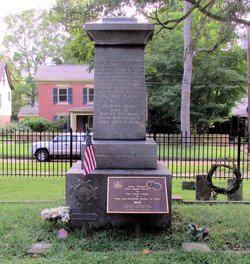Rufus PUTNAM
SAR Patriot #:
P-274594
The following information was assembled from numerous sources and cannot be used directly as proof of Qualifying Service or Lineage.
It is considered a research aid and is intended to assist in locating sources that can be used as proof.
State of Service: MA
Qualifying Service: Brigadier General
DAR #: A092745
Birth: 09 Apr 1738 Sutton / Worchester / MA
Death: 04 May 1824 Marietta / Washington / OH
Qualifying Service Description:
- Col. Engineer, 05 Aug 1776
- Col. 5th MA, 1 Nov 1776
- LtCol, Col Brewer MA Regt, 19 May - December 1775
- LtCol.,22nd Continental Infantry, MA Troops, 1 Jan 1776
- BG, Continental Army, 07 January 1783to close of war
Additional References:
- V.R. Rutland, MA 121
- Heitman's Historical Register, pg 551
- Putnam, The Putnam Lineage, 1907 - pg 161-169
- MA Soldiers & Sailors, Vol 12, pg 875-876
- Heitman, F.B. - Hist Register of Officers of Continental Army, 1775-1783, pg 455
- Buell, Rowena - Memoirs of Rufus Putnam, etc by Natl Soc of Colonial Dames of America in State of OH, 1903, pg 99 & 102
Spouse: (1) Elizabeth Ayers; (2) Persis Rice
Children: Martha; Catharine; Persis; Susanna; Edwin; Abigail; William Rufus;
Members Who Share This Ancestor
| Date Approved | Society | ACN | SAR Member Info | Lineage via Child | View Application Detail | |
|---|---|---|---|---|---|---|
| 1969-03-06 | KS | Unassigned | Adelbert Samuel Reece (97712) | Susanna | ||
| 1971-07-12 | KS | Unassigned | Michael Gordon Harper (100367) | Susanna | ||
| 1974-08-30 | IL | Unassigned | Andrew Lang Russel Jr (107188) | Susanna | ||
| 1975-11-28 | AZ | Unassigned | William R Sant (107815) | Martha | ||
| 1976-08-12 | IA | Unassigned | Francis Eugene Van Sant (109738) | Martha | ||
| 1977-01-21 | IL | Unassigned | Lawrence Edmund Sperry Jr (112427) | Abigail | ||
| 2003-04-10 | OR | 15785 | Keith Daniel Gillis (160103) | Martha | ||
| 2019-02-22 | IN | 85360 | Damian Charles Stanziano (210750) | Susanna | ||
| 2022-04-15 | MO | 101731 | Leonard Joseph Steinman II (222221) | Susanna |
Burial:
Location:
Marietta / Washington / OH / USA
Find A Grave Cemetery #:
Marker Type:
large verticle monument with SAR marker
SAR Grave Dedication Date:
26 May 2016
Comments:
Directions to Cemetery / Gravesite:
Image provided with permission from Scott Baker, Find-A-Grave member # 48284125
